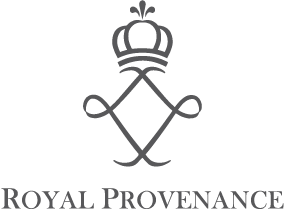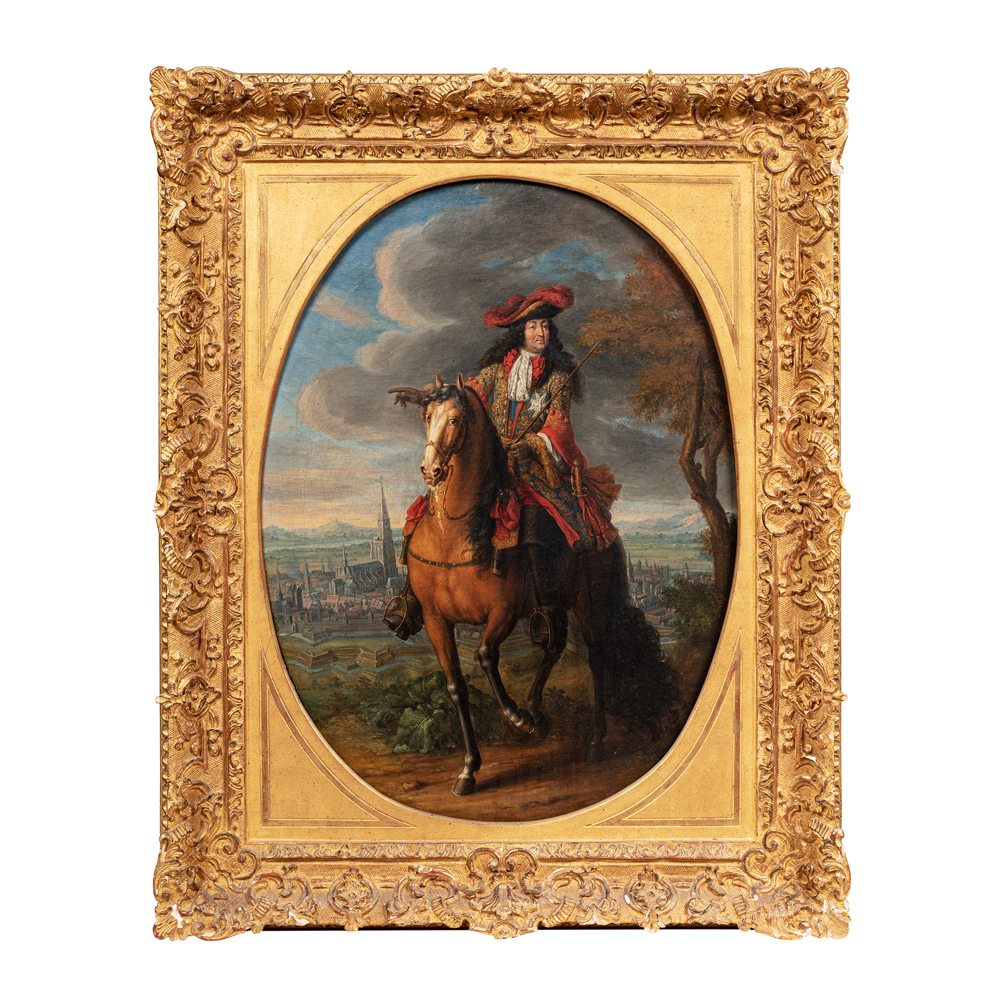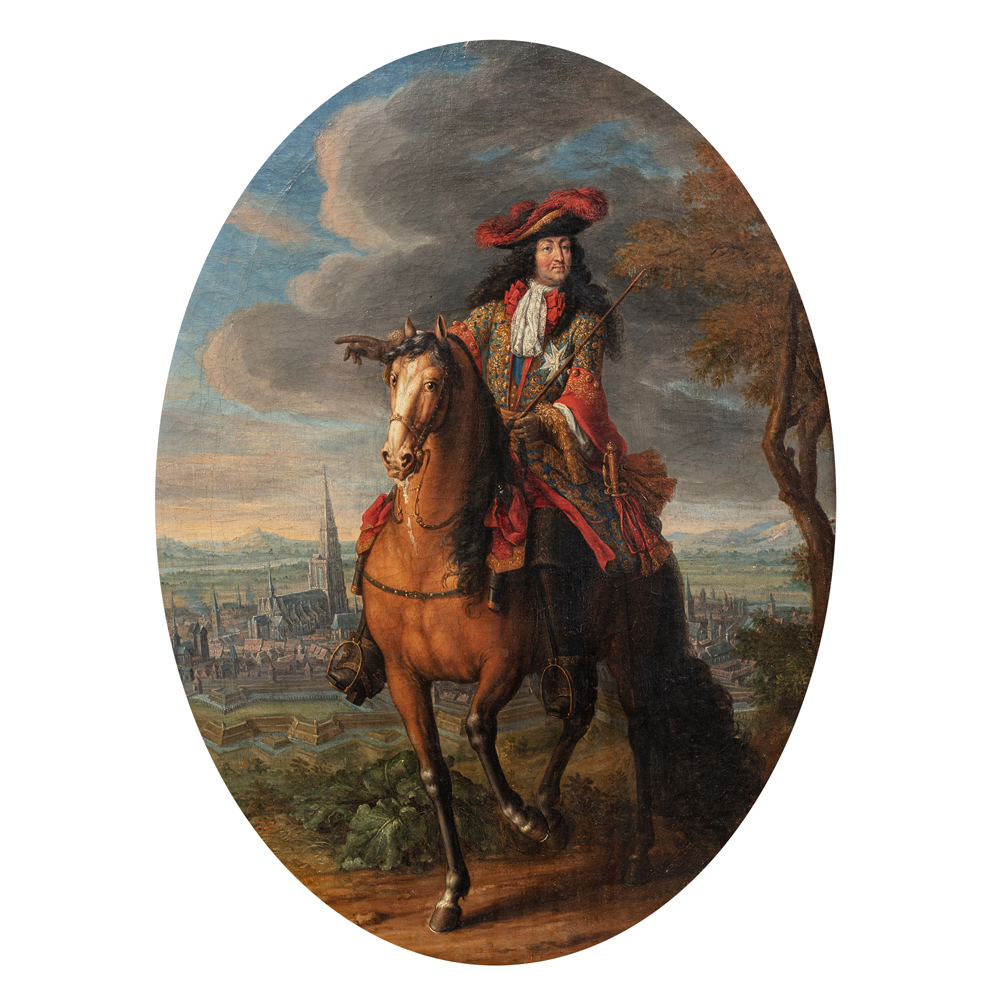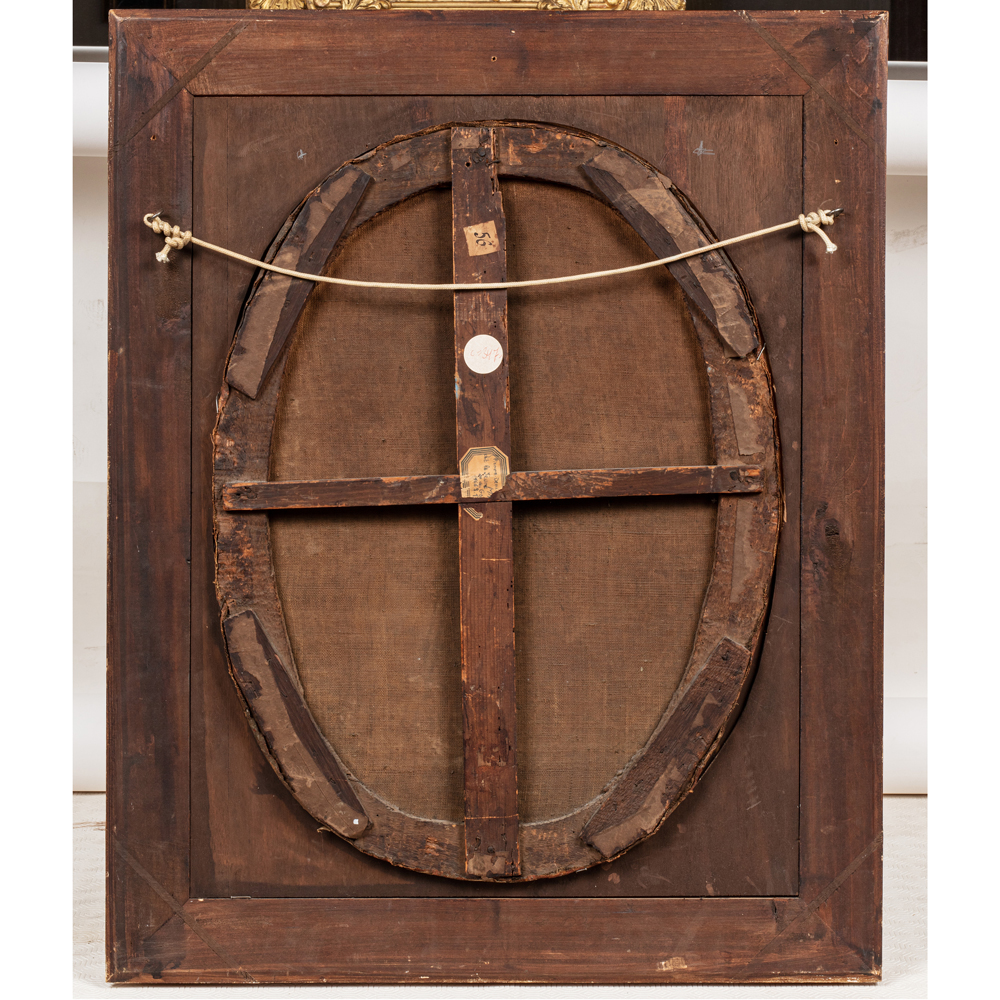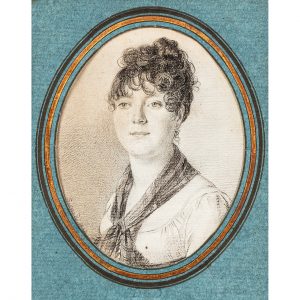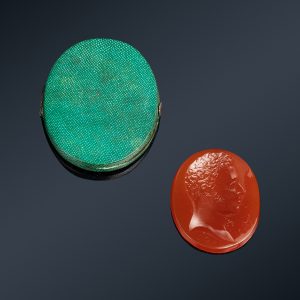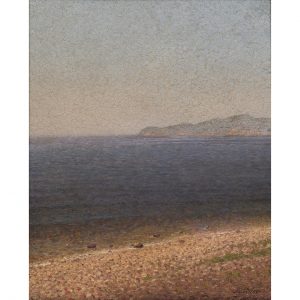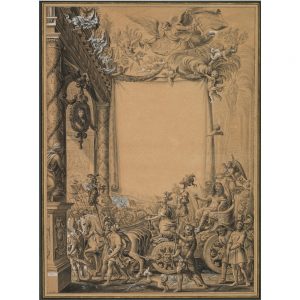Oil on canvas.
Circa 1690.
H. 60 x W. 44 cm.
At the back :
- Inventory label, dating from the 19th century, hand-annotated: 56.
- Label, dating from the beginning of the 20th century, partially torn off, annotated by hand: Pierre-Denis Ma... / dit Le Jeune ou des Go... / (1663-17...
- Inventory label, dating from the end of the 20th century, hand-annotated: C 347.
- Preserved in one of the French residences of the Bourbon-Parme family, until the 2010s.
- Private collection from northern France, since the 2010s.
Attributed to Adam-Frans Van der Meulen (1632-1690) and his workshop, Portrait of Louis XIV on horseback, in front of Strasbourg, around 1685, oil on canvas, 160 x 101 cm, Historical Museum of the City of Strasbourg (inv. 88.982.4.1).
On the afternoon of September 30, 1681, King Louis XIV was at the height of his glory: having recently celebrated his 42nd birthday, he received the capitulation of Strasbourg, once a "free city" of the Holy Roman Empire, which now "recognizes His Most Christian Majesty as his sovereign lord and protector". Never before had the frontiers of France been extended to such an extent, now encompassing the left bank of the Rhine.
Two days earlier, the king had camped with his 30,000 men in front of the fortifications of the city-state, rich with 25,000 inhabitants, isolated and financially fragile since the Treaty of Westphalia of 1648 had offered France most of the province of Alsace, once owned by the Habsburgs.
This show of force had made it possible to hasten the negotiations, without shedding blood.
The king was given the keys to the city on October 23, and then symbolically demolished a section of the city's fortification, which offered him its 264 cannons and returned its cathedral to the exclusive use of the Catholic faith, a first since 1592.
In our painting, the king is represented as a sovereign, not as a conqueror, in ceremonial costume, not in cuirass, holding a cane, and not a baton of command. He points to the city with his right hand, seen from the northeast. The topographic location of the portrait is probably an allusion to the place where the king was given the keys to the city, as commemorated in a painting by Constantin Francken (Strasbourg, Historical Museum, inv. 88.004.2.1).
Our portrait adorned, until a few years ago, one of the French residences of the Bourbon-Parme family, a direct descendant of the model. The label present on the back of the work, having preserved intact the memory of a precise attribution to Pierre-Denis Martin - a pupil of Van Der Meulen quickly forgotten by amateurs - seems to us quite credible. The historical museum of Strasbourg preserves a monumental version of an equestrian portrait of Louis XIV presenting great similarities in composition, with an attribution to "Van der Meulen and his workshop".
Eminent painter of battles and illustrator of the king's conquests, Adam-François Van der Meulen (and his pupils) were indeed sent by Colbert to Strasbourg in November 1681, "His Majesty needing these views for various works to which she continually does so. to work". Returning to Paris at the beginning of the year 1682, the view of Strasbourg was not yet finished in 1690, at his death, as specified in his post-death inventory.
In the "book of reason" kept succinctly by the artist until the end of his days, no equestrian portrait in front of Strasbourg is explicitly mentioned, so much so that it seems natural to us to attribute our portrait to one one of his most faithful disciples, author of six of the views of "conquered cities" formerly exhibited at Marly.
